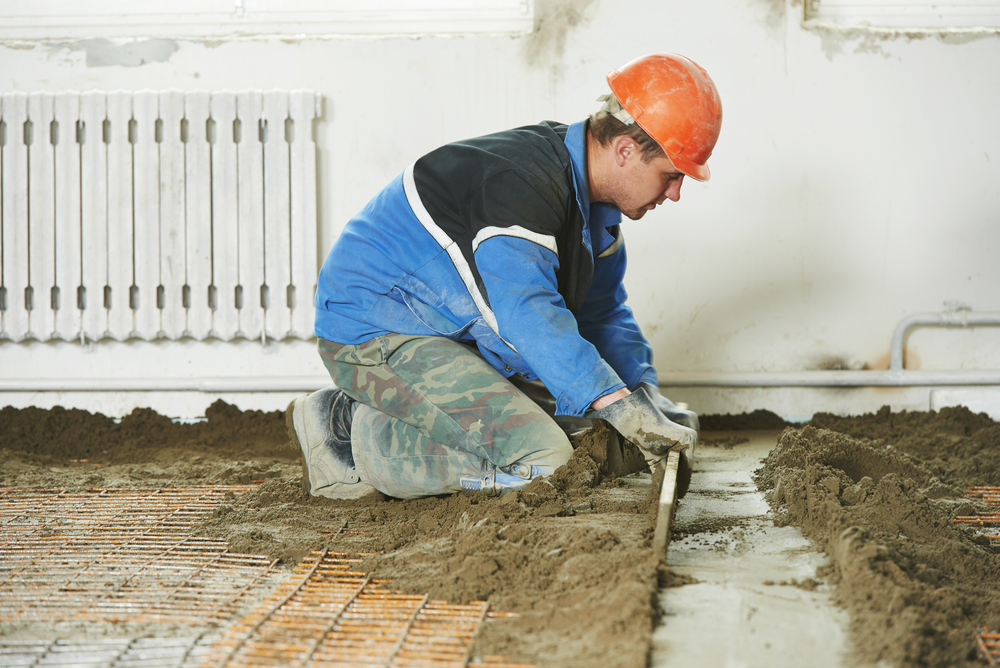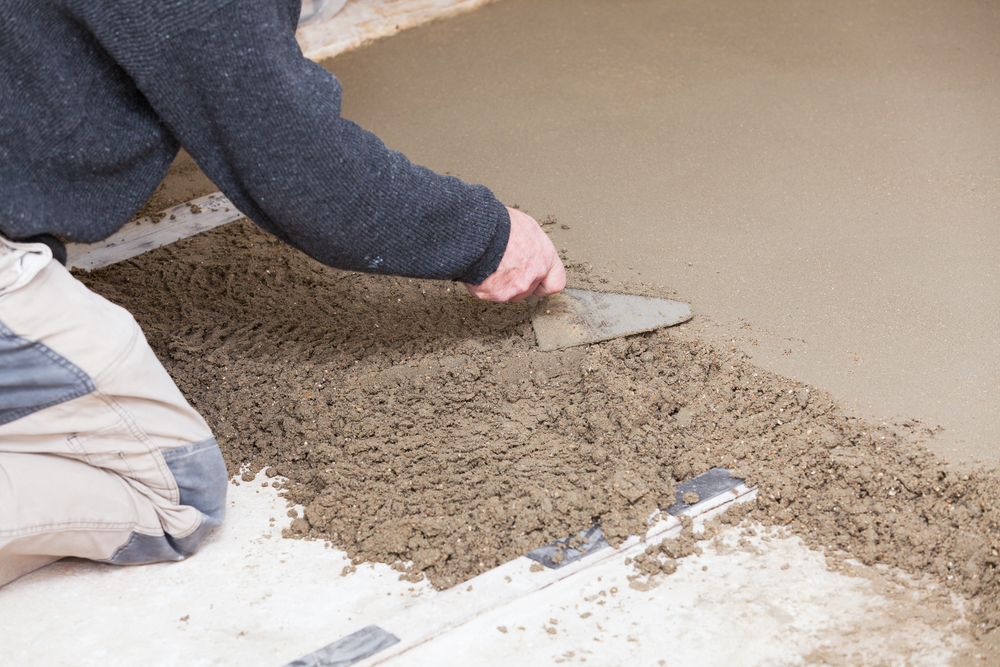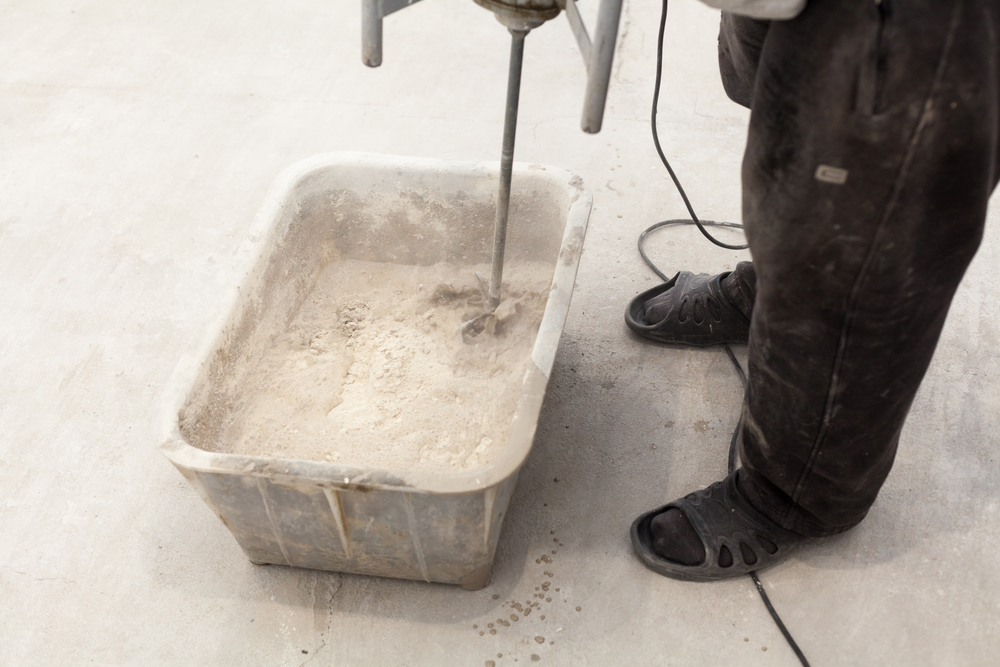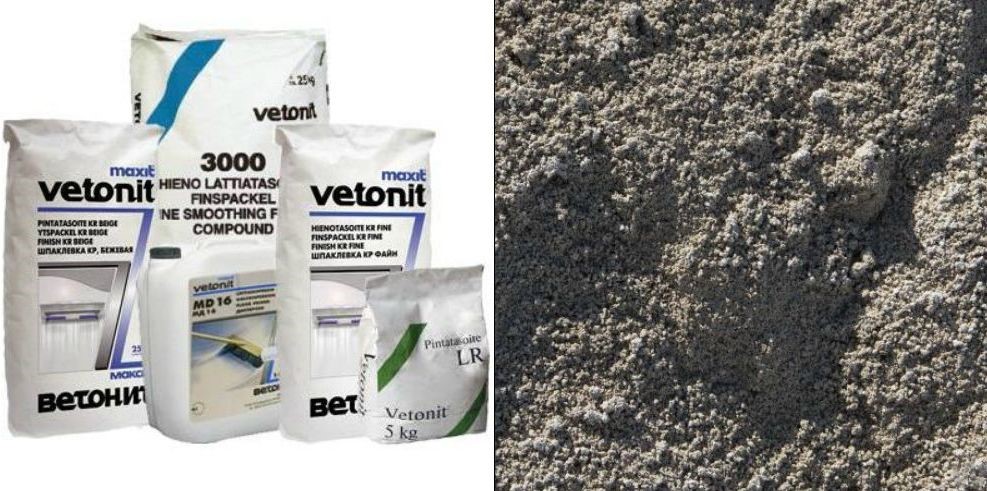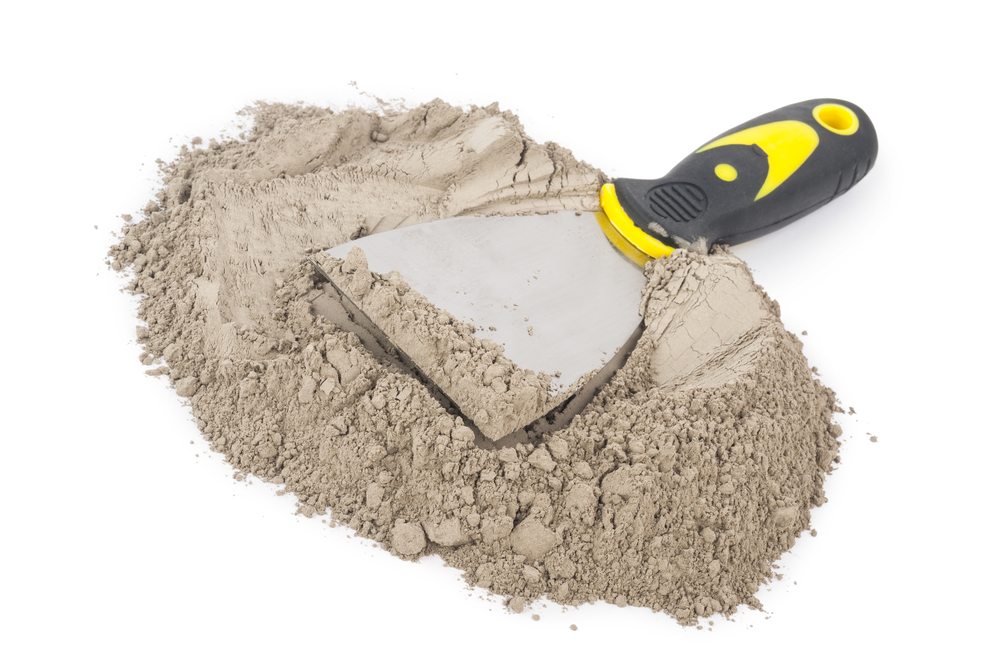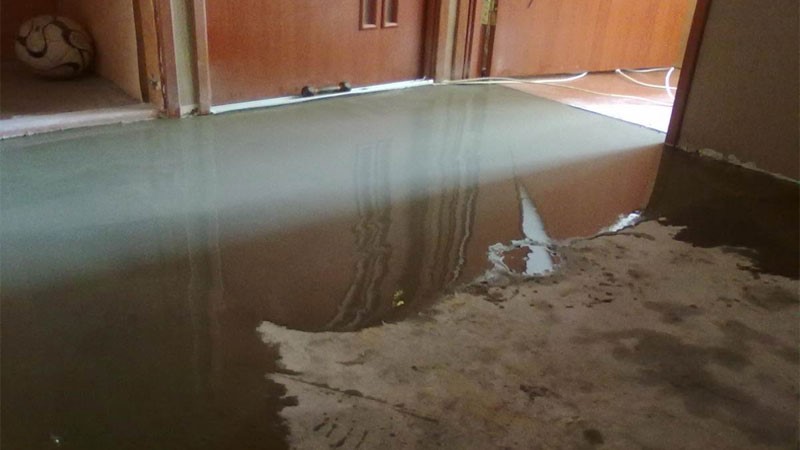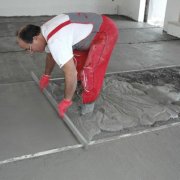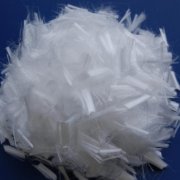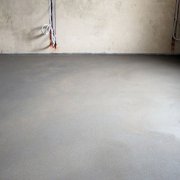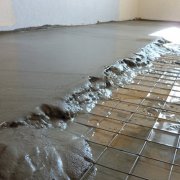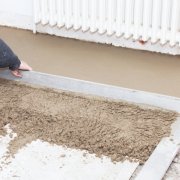Mix for floor screed: choose the right one!
Floor screed plays an important role in the decoration of any room in the apartment. A screed is called the last, upper layer of the rough floor, on which a decorative coating is laid. Such preliminary alignment is carried out before laying parquet, laminate and tile, if the differences in the floor height in the room interfere with tightly joining the elements of such a prefabricated floor, and in the case of linoleum, alignment cannot be avoided, since each unevenness creates a risk of damage to the coating at this place. That is, the floor screed is necessary for any coating, except for the carpet. In addition to leveling, the screed will make the floor strong, increase the resistance to loads and evenly distribute them on the lower layers, thereby prolonging the life of the floor structure.
Previously, the standard cement-sand mixture for floor screed, which was prepared independently, did not have equal in popularity. But as time goes on, the industry is developing and offering new products. On the shelves of construction stores, a ready-made mixture for semi-dry screed (and dry too), a quick-drying and self-leveling mixture, mixtures with the addition of plasticizers, a special mixture for screed floor heating. You have to pay more for them, and not every owner carefully evaluates the benefits, preferring to save and do the old-fashioned way. In this article, we will consider in which aspects the classic sand-cement mixture for floor screed loses to high-tech ready-made analogues.
The content of the article
Traditional varieties of screeds
Known to all the masters of the old school, our fathers and grandfathers, the mixes for screed are prepared independently on the basis of cement or gypsum - the choice of one of these main components determines the properties of the resulting solution. Which of the compositions is preferable depends on the conditions in which the finish proceeds, and subsequent operation.
Cement-sand mixtures
The leaders in terms of cement content (compared to concrete), and therefore, in terms of cost. Due to the high level of resistance to moisture, this screed is universal for all rooms. But the best option is a sand-cement mixture nevertheless has to be called a stretch, since the solidification of the solution is accompanied by severe shrinkage. When applying low layers (up to 30 mm), this side effect is fraught with the appearance of cracks. Thorough mixing helps to neutralize this danger, it is necessary to pay special attention to those who decided to carry out a screed on their own, without the involvement of specialists. It is better to spend extra time mixing the solution than to get a poor-quality damaged surface as a result. Cracks are also prevented by additional reinforcement of the screed.
Concrete Compounds
They contain less cement than the classic cement-sand mixture, so they are cheaper. The shrinkage of such a solution is not so great that it simplifies the process of arranging the screed for home masters, but you will have to pay for the ease of installation and cost savings by reducing the moisture resistance of the upper layer of the subfloor. Hence, concrete The composition is not suitable for every room.
Gypsum-based mixtures
As on the basis of concrete, they will not be suitable for places with high humidity. Moreover, even a room with normal humidity, in which there is a risk of a temporary increase, is not a place for gypsum, which will again become liquid, having absorbed the excess. But they are considered record holders for drying speed among traditional types of screeds - a couple of days is enough for them to completely harden. The gypsum base also guarantees minimal shrinkage among self-made screeds, easy pouring and does not require a thick layer.
Self-preparation of the solution
Let us dwell in more detail on the preparation of a sand-cement mixture for screed, as the most universal and most difficult to handle. You can successfully level the floor with your own hands, only following the rules.
We select the brand of cement and prepare the cleaned and sifted sand used for the preparation of the solution. Previously, they were simply mixed in a dry state and water was added, but with the increasing popularity of separately sold plasticizers and reinforcing fibers, they were added to the solution not only by professionals, but also by the owners who fill the screed themselves. Nevertheless, we do not forget that all dry additives are mixed with cement and sand, liquid - we add to water immediately before the combination of dry components and liquid.
At the same time, there is a misconception that when connected, the liquid is poured to the dry components. In fact, on the contrary, a sand-cement mixture is poured into a container with water. Thoroughly mix the composition and reduce the time spent on this will help a drill with a special nozzle or construction mixer.
The secret to the success of the cement-sand screed mix lies in precisely observing the proportions of the ingredients. For example, having bought cement of the M400 brand, expect that for each part of such cement 4 parts of sand will be required. If you still decide to fill the concrete screed, stock up with gravel - add 7 parts to the mixture obtained from cement and sand. The resulting solution corresponds to the brand M100.
Ready-made screeds
The described long and difficult path for the most leisurely and economical, so many will not do. Someone is running out of time, someone is simply striving to quickly complete the repair and move into the apartment, someone has saved on something else and can afford to spend money on flooring. For such owners, a mixture for screed is offered by a number of manufacturers in finished form. This means that all dry components in the right proportions are already mixed at the factory and it remains only to connect them with the volume of water indicated on the package. We will consider all the advantages of using such mixtures in the next section.
Advantages of finished compounds
According to a number of parameters, the finished compounds leave the obsolete cement screed far behind.
Firstly, there is no risk of mistaken proportions by mixing dry ingredients. Still, it will not be possible to eliminate the “human factor” - much still depends on you. The screed will be strong and reliable if you carefully read the instructions on the packaging, carefully measure the amount of water indicated there, mix thoroughly and monitor the homogeneity of the solution, the absence of delamination of the sediment and lumps.
Secondly, The total weight of the floor structure when using the ready-mix for pouring is lower than with concrete mortar. In addition to reducing the load on the lower layers, this saves on delivery and simplifies installation. For kneading, you don’t even need additional tools, a special drill nozzle will cope with this task.
Thirdly, the thickness of the leveling layer will be up to 6 times less if you choose a dry mixture instead of a traditional screed.Only a 5 mm layer will not yield in strength to a concrete mortar poured to a height of 3 cm.
Fourth, the monolithic layer of screed from the finished dry mixture hardens quickly, which will allow not only to immediately start laying the decorative coating, but also to proceed to the subsequent stages of finishing the room.
And finally, fifthly: the choice of manufacturers and special “narrowly targeted” mixtures on the market is so great that it is not difficult to find an option that suits the best room.
Varieties of dry mixes
The basic component of the finished mixture for floor screed, as well as in the case of a solution of hand-made cooking, is cement or gypsum. In the following sections, we consider both types in detail.
Cement-based bulk solutions
Apply such screeds in any room, the layer thickness is up to 50 mm. Buyers have the expected question: why pay more for the same cement that you can mix yourself. The same, but not the same. Because plasticizers and other modifying additives, which have to be purchased separately for a traditional screed, have already been added to the composition. Along with fillers of natural origin (mineral) and artificial - they are called synthetic. These modifiers and fillers determine which of the 4 possible types of products the mixture belongs to.
- Draft for the bottom layer. Culinary experts would call this structure "coarse grinding." Coarse sand and granite chips are added to the concrete. Such inclusions do not allow to achieve a final flat surface, but, according to the builders, they ensure the correct filling of the lower layer under the floor with a heating thickness of 3-8 cm. Since the goal of leveling the floor in this way is not achieved, the next layer provides it - the finish.
- Bulk mixes for finishing, top filling the floor are designed to finish what was started on the bottom layer, that is, to finally smooth the surface. This layer with a height of up to 5 mm is already used as the basis for the front floor covering. The sand in such a mixture is used finely, plasticizers are selected with a view to the minimum thickness and full leveling. Strength and reliability gives fiberglass or fiberglass shaped reinforcing mesh.
- Self-leveling mixes. They contain components of the fine fraction, therefore they are intended only for finishing pouring no higher than half a centimeter. The quick-drying solution is nevertheless highly durable, but it scares off buyers at the right price.
- Special mixture for screed under the heating system. It is permissible to use a mixture of "wide profile" with a warm floor, but such a plasticity of the composition cannot be achieved.
A few words about the commercial tricks of manufacturers: if you set an unreasonable price and give the product a vague name, the buyer may be mistaken and take a mixture of one species for another. If you are not sure what kind of ready-made mixtures to include the packaging that you hold in your hands, turn it over and examine the composition. It indicates the size of the fraction, indicating the purpose of the product. For example, a standard mixture has a grain size of 1.5 mm or more. But the self-leveling composition varies in the range of 0.6-0.8 mm, the finished layer is provided with a thickness of about a centimeter. If the thickness is indicated more, this is a sure sign that self-leveling in such a mixture is only a price.
Plaster-based formulations
Gypsum mixtures are used to fill a thick screed, the height of which starts from 100 mm. The strength of the surface of the gypsum screed is achieved through the use of fine sand and special fibers. But the lack of gypsum, which does not allow the use of gypsum-based mixtures in all rooms, remains unchanged - fear of moisture. For the same reason, gypsum screed is not made outdoors.And in living rooms, gypsum is effective precisely because the ability to absorb moisture, and then give it to the air, regulates the humidity level in the room. The fact that the material is environmentally friendly, has heat-insulating properties and does not dust when kneaded, also speaks in its favor. Wood flooring is recommended to be laid exclusively on a gypsum screed, since cement does not protect the wood from drying out and deformation.
Which floor mix is best?
Imagine that you go in turn to several different rooms - a living room, a bathroom, a private house at the construction stage - the answer will be different for each case. It equally depends on required thickness rough screed, functional features of the premises and the financial circumstances of the owners.
Calculation of dry mixes for work
If specially trained people repair the room, as a rule, the owners do not have to go into calculations of finishing materials. But in the case when the owners make repairs on their own, with the calculation of dry mixes sold in large bags of 25 and 50 kg, difficulties arise. Depending on how smooth and high-quality the room is in front of the screed, and which is expected as a result, as the basis for the decorative coating, the thickness of the fill layer is calculated.
The next step is to establish the area of the room, you can measure the length of the walls in the old-fashioned way - with the usual roulette, but the laser will tell you more precisely. The last parameter that is not enough for the calculation - the average consumption of the mixture per square meter - is indicated on the package. For each composition it is individual, but you can focus on 20 kilograms of dry mix to raise the surface of each square meter by 1 cm.
Ready-mixed screed
It is not difficult to fill the screed for the floor yourself, observing a number of easy rules. Contrary to a widespread misconception, the preparation of a solution is not the beginning, but the middle of the process. The first stage is preparation for filling the floor and walls. The floor is prepared for the arrangement of the screed, priming with two layers of a special composition. The primer improves the adhesion of the fill to the original surface. For a floating screed, adhesion is useless, therefore, a waterproofing layer, for example, a plastic film, is laid in its place.
Foamed polyethylene tape is glued to the walls around the perimeter, from the assortment of the store choose the appropriate height so that it is enough for the thickness of the screed. This tape is called damper and protects the walls from deformation of the screed, responsive to humidity and temperature. In the conditions of a modest budget, this adhesive tape is successfully replaced by double-sided tape. The next step is the installation of guides using a level with an interval of more than a meter.
And only now we begin to prepare a solution of dry mix for floor screed. We pay double attention to the kneading procedure, the quality of the obtained surface and the lifetime of the floor structure depend on the uniformity of the composition. If the mixture is not self-leveling, after pouring between the guides, we level the layer with a rule.
Self-leveling mixture spreads without additional operations. Follow the manufacturer's instructions and wait for the time required to dry each coat.
